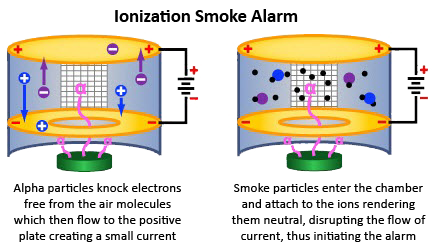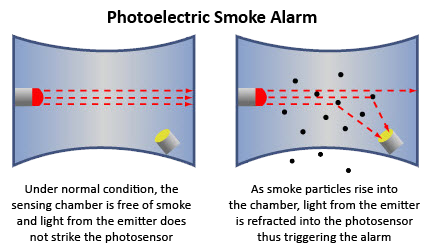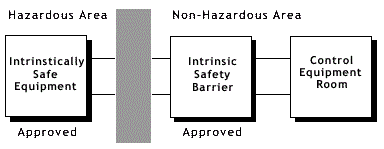
Smoke Detector is a device that senses smoke, typically as an indicator of fire. The two most commonly recognized smoke detection technologies, regardless of their communication method, Addressable or conventional, are Ionization Smoke Detection and Photoelectric Smoke Detection.
Ionization Smoke Detector |
|
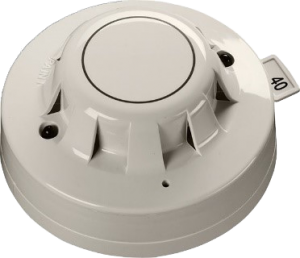 |
It uses a radioisotope to ionize air and a difference due to smoke is detected. Ionization smoke detectors have a small amount of radioactive material between two electrically charged plates, which ionizes the air and causes current to flow between the plates. When smoke enters the chamber, it disrupts the flow of ions, thus reducing the flow of current and activating the alarm. Read more…
|
Photoelectric / Optical Smoke Detector |
|
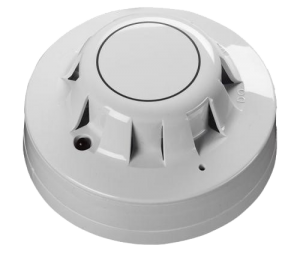 |
It contains a source of infrared, visible or ultraviolet light, typically an incandescent light bulb or light-emitting diode, a lens and a photoelectric receiver, typically a photodiode.
Photoelectric smoke detectors aim a light source into a sensing chamber at an angle away from the sensor. Smoke enters the chamber, reflecting light onto the light sensor and triggering the alarm.
|
Special Applications
Intrinsically Safe Smoke Detector |
|
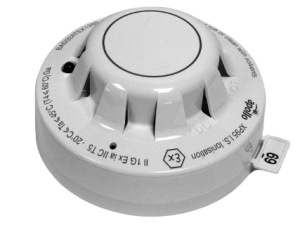 |
It is used in hazardous locations where explosive levels of gas or vapors are normally or potentially present. Intrinsically safe detectors must be compatible with the system control panel for proper use. An intrinsically safe barrier must be installed at the point where the intrinsically safe circuit connects to the fire alarm control panel. The barrier limits the available voltage and current available on the circuit to safe levels.
|
Comparison
Typical Smoke Detector Obscuration can be concluded as below. Obscuration is a unit of measurement that has become the standard way of specifying smoke detector sensitivity. Obscuration is the effect smoke has that reduces light intensity, expressed in percent absorption per unit length; higher concentrations of smoke result in higher obscuration levels.
| Detector type | Obscuration |
| Ionization Smoke Detector | 2.6–5.0% obs/m |
| Photoelectric Smoke Detector | 0.70–13.0% obs/m |
| Early Warning Smoke Detector | 0.005–20.5% obs/m |
| Optical Beam Detector | 0.06–6.41% obs/m |
Applicable Notes
- According to NFPA recommendation, ionization smoke detectors are generally more responsive to flaming fires.
- According to NFPA recommendation, photoelectric smoke detectors are generally more responsive to fires that begin with a long period of smoldering.
- According to NFPA recommendation, for best protection, use both types of smoke alarm technologies.
- To positioning the Smoke Detectors, related standards such as NFPA 72 or EN54 shall be considered. However the coverage of Spot-type Smoke Detectors can be considered as 112 m2.
- There are multiple ways to make equipment safe for use in explosive-hazardous areas. Intrinsic safety (denoted by “i” in the ATEX and IECEx Explosion Classifications) is one of several available methods for electrical equipment.
Our Services
SISICO is able to offer an extensive range of Smoke Detectors to suit your specific environment from below mentioned companies:

